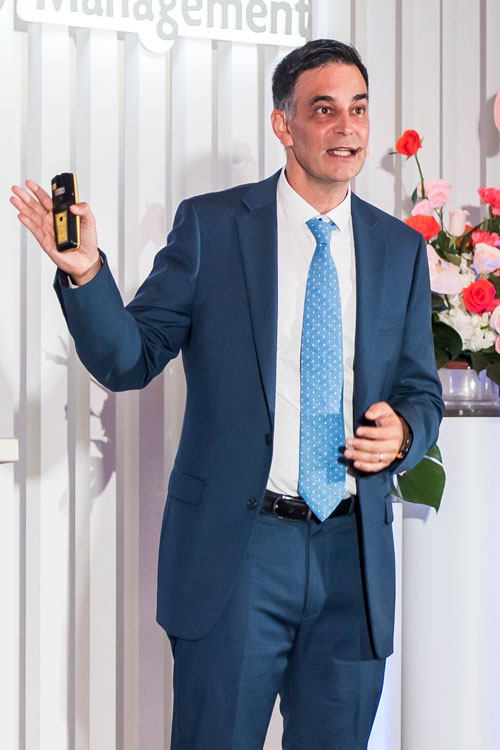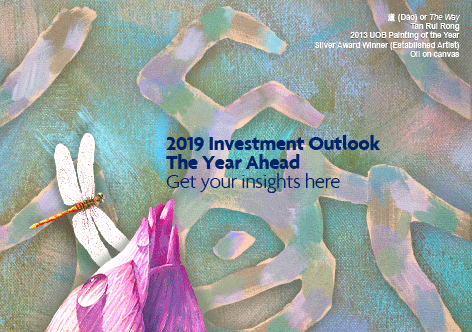
Going back to first principles
By Anthony Raza
Senior Director and Head of Multi-Asset Strategy,
UOB Asset Management
It has been a really tough call to make on the outlook for 2019. The severe market correction at the end of 2018 posed the difficult question of whether to call a time-out on our constructive stance on markets or to roll with the punches.
The December 2018 equity market correction, which was more severe than other bull market corrections and is outside the norms of what we have seen before, triggered our ‘crisis tools’. Ultimately, the 2019 call boiled down to whether we determined that the fourth quarter correction was a warning signal to dial back risk or an aberration from which markets can rebound – in which case it would be remiss of us not to recommend staying invested.
‘First Principles’-based investment approach
At the end of the day, my team and I decided that we had to go back to basics and adopt a ‘first principles’-based investment approach. This called for a return to fundamental factors to anchor our investment recommendation. We believe that our fundamentals-driven process is especially essential in times of volatility as it provides a grounded approach for us to make sense of the financial markets. This includes a review of indicators such as global economic growth, corporate earnings, equity valuations, bond yields and recession risks. After careful analysis of these factors, our assessment is that they point to a positive outlook for 2019.
Firstly, global economic growth continues to be robust with economists around the world (Source: Bloomberg, 2018) and the International Monetary Fund (Source: World Economic Outlook, 2018, IMF) forecasting that global real gross domestic product growth for 2019 will be at above-trend levels of 3.6 per cent to 3.7 per cent. Corporate earnings globally are also likely to continue growing at high single-digit levels, which bode well for equity yield valuations. As such, we expect equity returns of 10 to 15 per cent for 2019. At the same time, with interest rates having risen over the last two years, bond yields are at attractive levels and we expect overall returns of four to six per cent for fixed income for the full year.
Other factors on our checklist such as recession indicators including economic data, debt levels and bond yield spreads also lead us to conclude that a recession in 2019 is not likely, despite some market concerns.
Recession check
In fact, at the start of UOBAM’s 2019 Investment Outlook Seminar held on Thursday, 17 January 2019, I polled the 250 participants, who included our local and regional institutional investors and fund distributors, asking them whether they expect the next recession to happen in 2019, 2020 or after. Most respondents concurred with our view that a recession is not expected in 2019, with a majority indicating that they think it more likely to occur in 2020.
Another question I posed was: ‘How many times in history has global growth been above trend, global earnings growth been double-digit, inflation under control, and yet leading to a year of both equity and bond losses?’ Most responses pointed to this being a rare occurrence. In fact, it had never happened – until last year, that is.
Key risks in the market
To make sense of this ‘aberration’, as we would call it, I asked the participants what they thought was ‘wrong with the markets’. A majority of respondents indicated trade tensions, which were starting to impact growth and profitability; and late cycle worries, where an ageing cycle triggers investor jitters at the first hint of a correction. Other concerns on my list included the US Federal Reserve (Fed) hiking interest rates too rapidly with Quantitative Tightening being too aggressive; US policy leadership concerns under President Trump; and Brexit with the uncertainties and concerns around a Hard Brexit scenario.
Similarly, we expect the US Fed’s interest rate increases and global trade tensions to remain as key risk factors this year. Keeping in mind the potential of increasing recession risks in 2020, we will manage our risk taking amid the market volatility. Hence our approach to the start of 2019 is to keep to our fundamental views, but respect our risk management process that moderates risk taking when we get severe market signals.
Our investment recommendations
Our broad recommendation is to remain driven by positive fundamentals to stay invested and balanced, but follow risk mitigation signals to help deal with market volatility. Across asset classes, we are recommending for the first quarter of 2019, to be slightly overweight on equities and slightly underweight on fixed income. As the US Fed looks to have taken a more cautious view of its domestic economy and inflation, we expect that it may pause its interest rate increases in the first half of the year. Historically, both equity and bond prices have benefitted from such gaps and we prefer equities to fixed income as we expect bond yields to be muted in the first quarter before rising to higher levels for the rest of the year.
Across regions, we are most optimistic of US equities on the back of estimates for high single-digit percentage increases in corporate earnings. While overall Asian market performance and corporate profitability will continue to be affected by China’s softening economy and its trade tensions with the US, we are overweight on Southeast Asian markets such as Singapore and Indonesia. Overall, we favour defensive sectors such as consumer staples and healthcare, and blue-chip companies, as well as stocks with high dividend yields to provide income to cushion market volatility.
A look at alternatives and other ideas
Given the ongoing market volatility, we also favour alternative investments such as hedge funds and private equity as tools to seek capital protection and returns. These investment strategies help to reduce risk and enhance long-term risk-adjusted returns irrespective of general market conditions.
As my colleague, UOB Alternative Investment Management Chief Executive Officer Low Han Seng, pointed out at our Seminar: “Regardless of what markets do, there are assets and companies that are growing. We just need to look harder.” Some of these opportunities lie in the private domain and require a long-term view to harvest returns for the patient investor.
Other speakers at the Seminar also spoke about the trend of Innovation in various fields ranging from healthcare to autonomous cars, which offer opportunities for investing in structural growth factors. The discussion on impact investing and the investment implications of changing global demographics and pensions also provided plenty of food for thought by way of investment ideas. At the Seminar, we also showcased our corporate digital advisory service, UOBAM Invest – our very own take on innovation in the investment management space.



